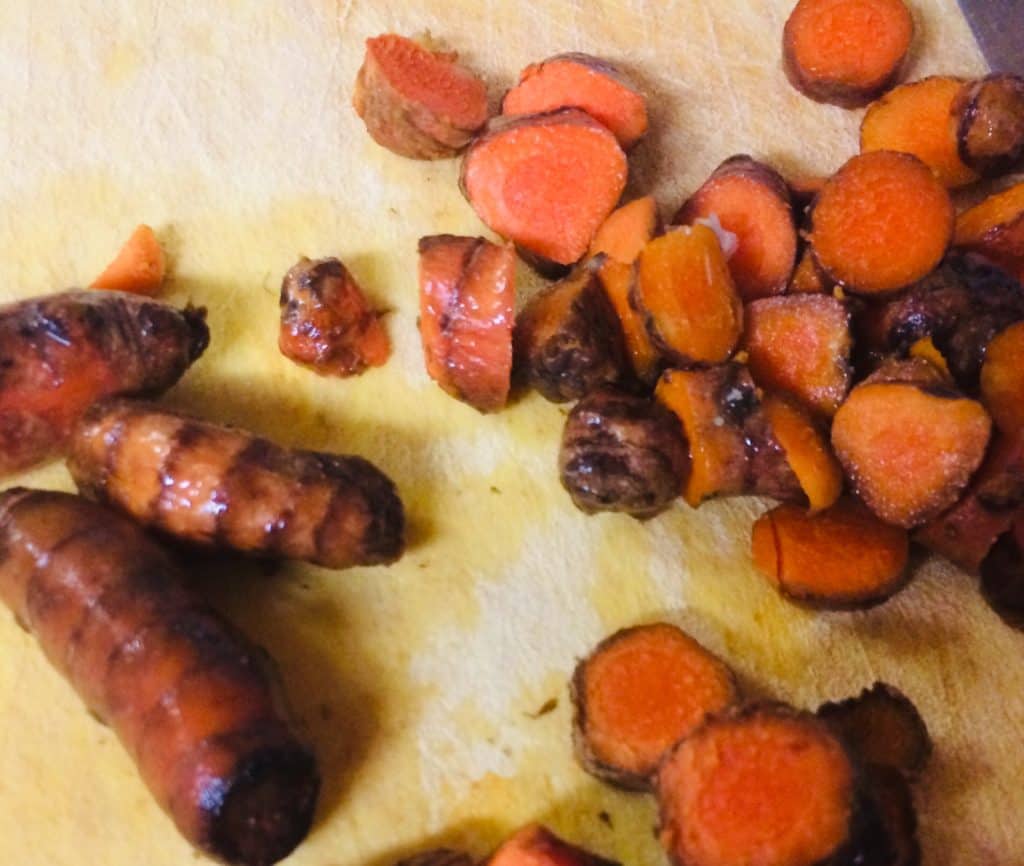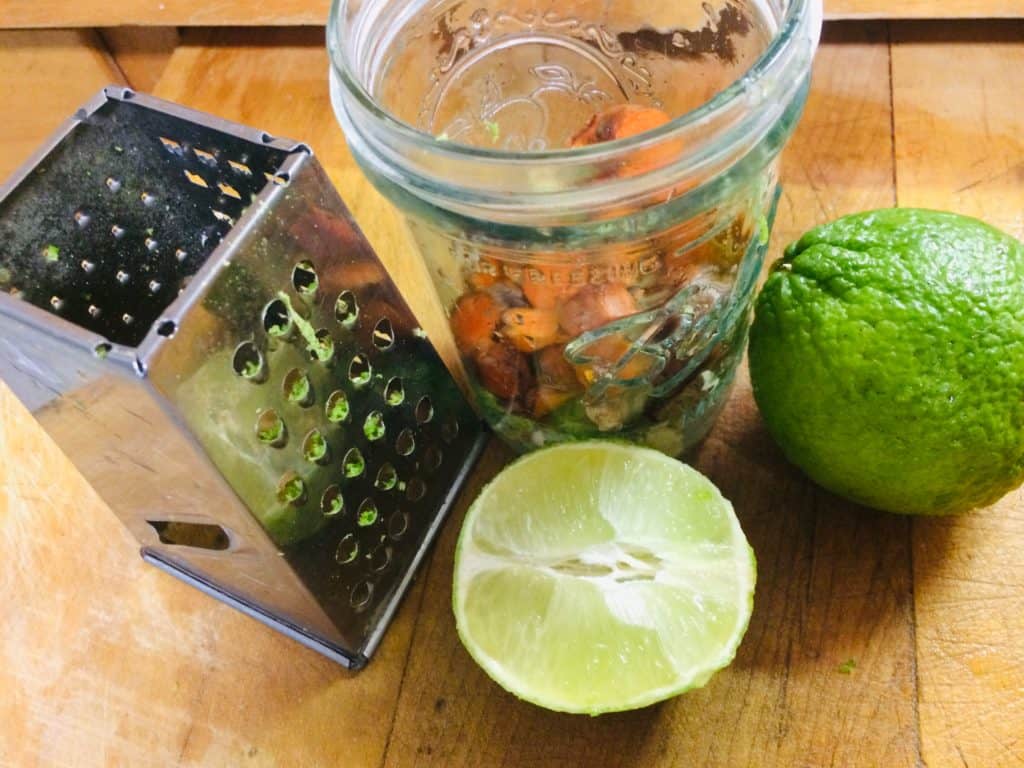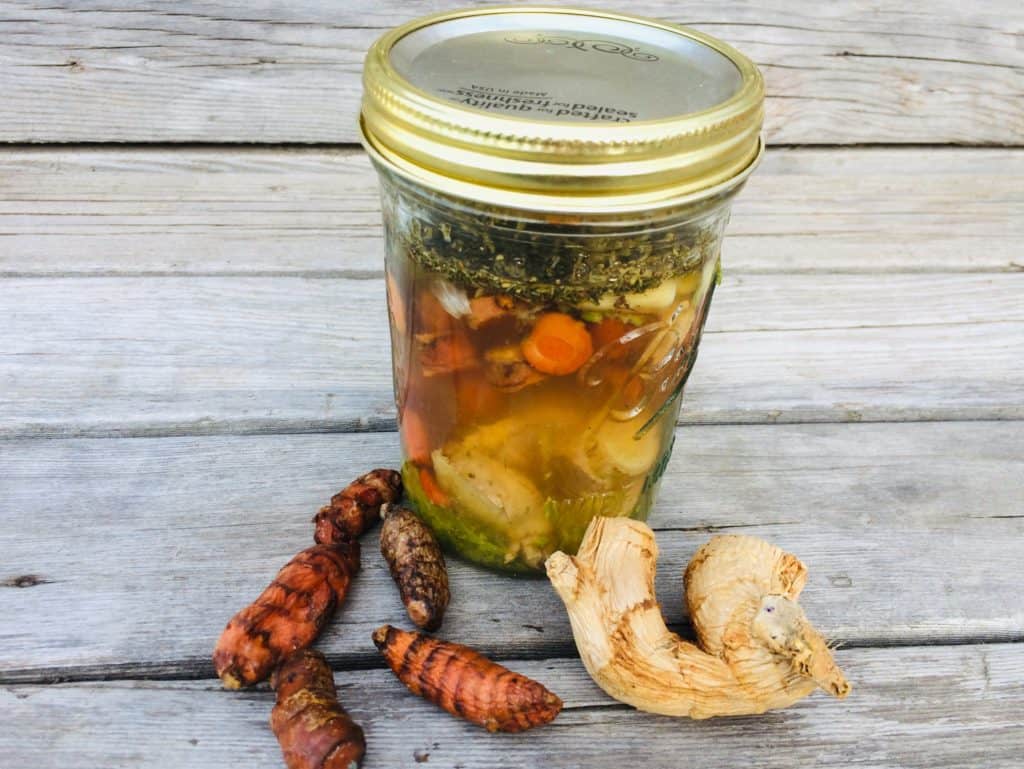I just finished making 2 pint jars of fire cider and it sits in a dark corner of my kitchen slowly aging to perfection. Horseradish is hard to come by at the moment until mine grows in this year’s garden, so my fire cider is not quite so spicy. It may be late to the show for the times we are in but 4 weeks from now, I will strain it out and use it for preventative measures to beef up the immune system as well as it’s many other benefits.
We have never tried Fire Cider so I am curious how this is going to taste. Will it be too spicy for my spice-avoiding teen to try it? Update: I find the taste absolutely delicious. It is strong and will clear the sinuses but has a lovely savory “afterglow”. I have even cooked with a few tablespoons of it into stock.
Did you know that up to 80% of your immune system is in the gut? Along with probiotics and digestive enzymes, fermented items such as kimchi, kombucha, yogurt, kefir, and raw sauerkrauts are a great way to increase the good microbes in the gut. This in turn helps strengthen the immune system. A diet high in fiber will also feed those good little workers.
Along with that super awesome benefit, there is a whopping bonus to fire ciders made with turmeric. Turmeric is known for being anti-inflammatory. Read on amigos!

This post contains an Amazon affiliate links, which means I receive a small commission, at no extra cost to you, if you make a purchase using links provided. Please see my disclosure page for more details.

What is fire cider?
Fire cider is a spicy and sweet tonic to spur on the immune system with powerful ingredients that are famous for their immune system stimulating qualities: cider vinegar, garlic, horseradish, ginger, onions, honey, and herbs. There are myriads of variations to this concept such as what I usually use when I feel a slight throat irritation: honey with mashed garlic clove and cayenne pepper. The original “Fire Cider” was made and taught by Rosemary Gladstone in the 1970’s. Her vision was to teach the art of thinking of food as medicine. Fire Cider stems from the oxymel class of tonics from the Greeks and Persians which in it’s most basic form is vinegar and honey. “Oxy” = acid and “mel” = honey
What are the benefits of fire cider?
- Apple cider vinegar is a great digestive aid
- Horseradish is powerful against sinus congestion
- Ginger helps with digestion, nausea, and infection
- Garlic is anti-microbial and anti-bacterial
- Onions are similar to garlic
- Cayenne Pepper helps stimulate the immune system
- Honey is soothing and an anti-inflammatory. If you use raw honey, it has it’s own anti-bacterial qualities. Adding the honey makes the fire cider palatable.

How do we to use it?
- I can choose to dilute a spoonful into a tea or hot drink. Straight off the spoon is also an option.
- As a preventative, a spoonful a couple of times a day.
- During an issue like a cold, a spoonful every few hours.
- It will remain to be seen if anyone else in my family will try it- they are pretty adventurous and love new food tastes so I think they will give it a go. ** Update: All of us have tried it and I have even put some in soup base. It has a nice bite to it with a spicy chaser zing and a flavorful after taste. I quite like it as well as my husband.

Ready to try some for yourself?
If you’re ready to take on the spice and are looking to make some for yourself and your family, here are a few places to check out. The recipe I used is from the book listed below that I love. I chose this recipe because of the lack of horseradish availability and the addition of turmeric. I highly recommend this resource for your library:
Check out Healing Herbal Infusions
Fire Cider Round-up resources
- Martha Stewart’s test kitchen traditional cider
- Eating Bird Food blog traditional style cider
- Mountain Rose Herb’s quick version plus exotic non-traditional version
- Chili Pepper Madness’ traditional version with added orange
- Small Footprint Family’s great master recipe with add-ins such as turmeric and seasonal options
- Nourish Shakti all about oxymels


